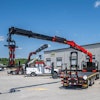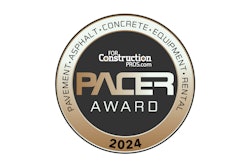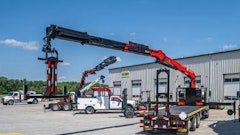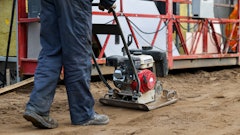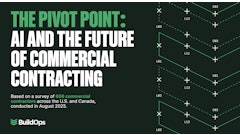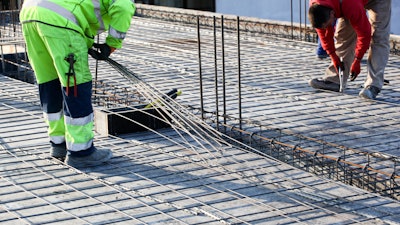
In an effort to protect America’s steel and aluminum industries, on February 11, President Trump signed proclamations to close loopholes, restoring a “true” 25 percent tariff on steel, raising the tariff from 10 to 25 percent on aluminum. As quickly as President Trump addressed these tariffs on what are vitally imported construction materials, it didn’t take long for anyone to start to wonder how this new policy could affect contractors and concrete construction.
The focus of the announced tariffs so far has been on imported steel and aluminum as well as products from Canada and Mexico – which includes a percentage of lumber and cement.
According to their February 3 statement, Portland Cement Association (PCA), stated that Canada and Mexico account for 27 percent of U.S imports – nearly 5 million metric tons of cement and 2 million metric tons from Mexico (2023 data). In their official response, Mike Ireland – president and CEO of the PCA stated: “While the U.S. cement industry agrees with the President’s objectives of bolstering American manufacturing, increasing border security, and advancing the country’s energy independence, the industry believes 25% tariffs on cement imported from Canada and Mexico could adversely affect energy and national security while delaying infrastructure projects and raising their costs.”
They added that having cement and concrete affordable is vital to the expansion of the country’s infrastructure and both our northern and southern neighbors play a crucial role in that supply. Adding their appreciation that the Administration is open to further negotiations and that they look forward to working with them to avoid “unintended consequences.”
 Brian Kassalen, Baker TillyBaker Tilly
Brian Kassalen, Baker TillyBaker Tilly
According to US Census Bureau, the U.S. imported about 915,000 metric tons of reinforcing bar in 2024 (down from 1.3 million tons in 2023). “We import probably about 25 percent of our steel from other countries,” says Kassalen. Considering the work in key construction areas like the infrastructure, roads, bridges, data centers, warehousing and more – a lot of concrete will be needed for those projects and that number will continue to expand in the future.
“I think the tariffs will probably have some people step back and relook at budgets or relook at time frames,” says Kassalen. “I don’t see where it’s going to slow down – it’s unfortunately going to be one of those things: contractors now have just one more thing to have to factor into their bidding and estimating process to figure out how they can be competitive.” In a way, at least most contractors will be in the same boat.
Communication with material suppliers will be key moving forward. Have those conversations with suppliers to discover the source of the materials. If you don’t already know, Kassalen recommends to talk with suppliers and get a better understanding where they’re getting their materials from. There may be a chance to work with them and determine if there’s an opportunity to source some of the material from elsewhere.
The big question on many minds: will US-based producers increase their prices? There’s a chance they may as the country can only produce so much steel, aluminum, cement, etc. Much like other price fluctuations the industry regularly handles, the cost will also likely be passed down to the end user. The construction sector already works with thin margins and only so much they can absorb.
Even though it’s unsure at what levels and when the negotiations will ultimately conclude, one of the big challenges facing contractors is managing that unknowable cost. While projects with materials already committed may not see any potential increase, it can become a real issue for the more recent estimations and bids.
Construction companies already have a stressful challenge of the amount of risk they shoulder on a daily basis – let alone executing the project itself – but adding the chaos of tariffs and the unpredictability of what they may mean to business is an extra level of challenges. Having a good estimating team in place, notes Kassalen, will help to manage and kickoff any impacted projects.
What’s the Upside?
It’s a comparison of short and long term effects. “When you think of the whole point of tariffs, a lot of it is to try to make the playing field more level for domestic producers and increase jobs in those sectors in the U.S.,” says Kassalen. “If you think about before Trump’s first term as President, a lot of steel that was imported in the US was from China. Now we import very little steel from China because the amount of tariffs…it made it more economical to not use Chinese imported steel.”
The challenge is time. It will likely take time for the market to respond and plants to return to capacity; it’s not a switch to flip or lever to pull. He reminds that, “You can’t turn on capacity in the U.S. or just start opening up new plans because it takes time to get those plants set up…the end goal would be that it helps to get more production the US but that is going to take time. That’s not an overnight fix.”
The cost of construction materials has always been impacted by market fluctuations. Its early so there’s a lot of speculation on the effect of tariffs. A lot of contractors are waiting for the dust to settle a bit to see what’s going to happen and add to the ever-changing definition of “new normal.”
“When we think about where construction fits into the life cycle of our economy, construction is always going to be busy,” notes Kassalen. “When we talk to our contractors, their backlog is good. There's always going to be projects.”
As the construction industry faces continued uncertainty due to tariffs, contractors with ongoing projects may struggle with unexpected cost increases, potentially impacting budgets and timelines. Moving forward, many in the industry are likely to place greater emphasis on contract terms, proactively including escalation clauses to mitigate the financial risks associated with fluctuating material costs. Additionally, we may see a shift toward alternative sourcing strategies, bulk purchasing agreements, and closer collaboration with suppliers to navigate these economic challenges more effectively.




